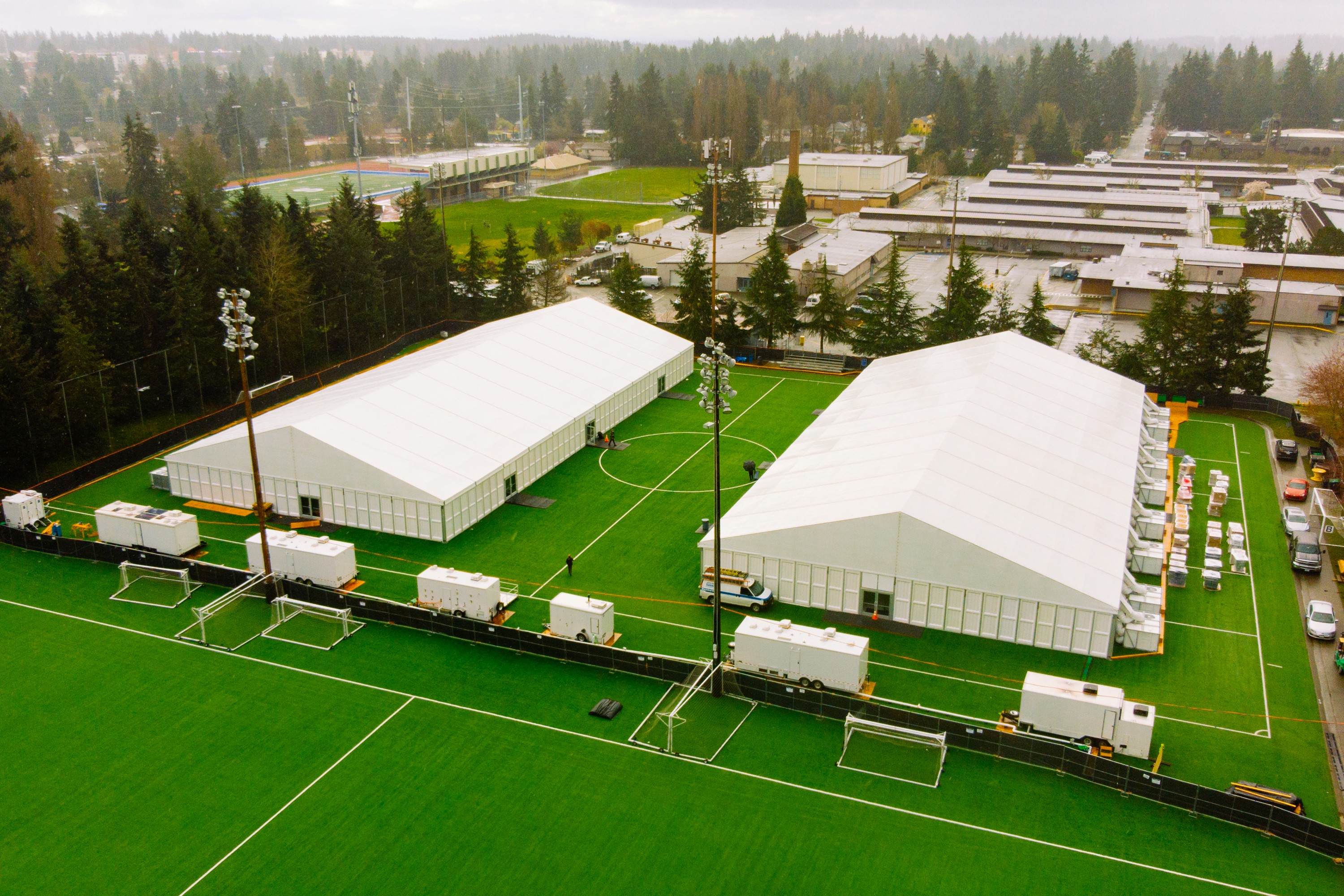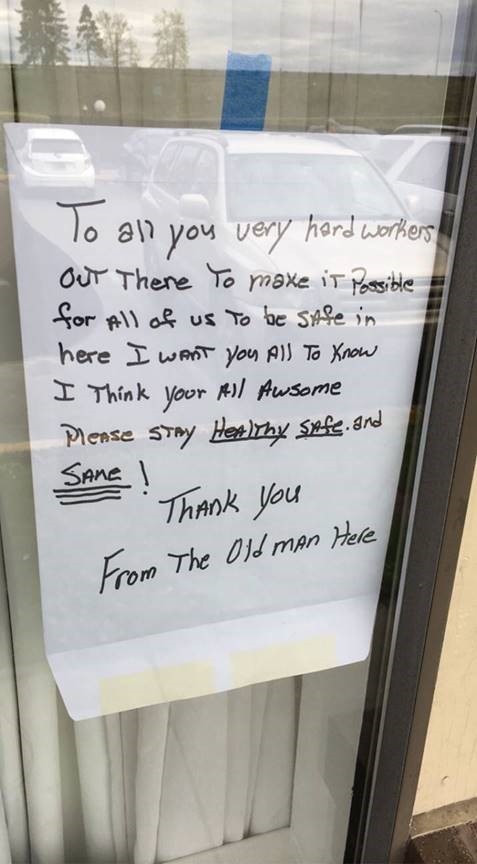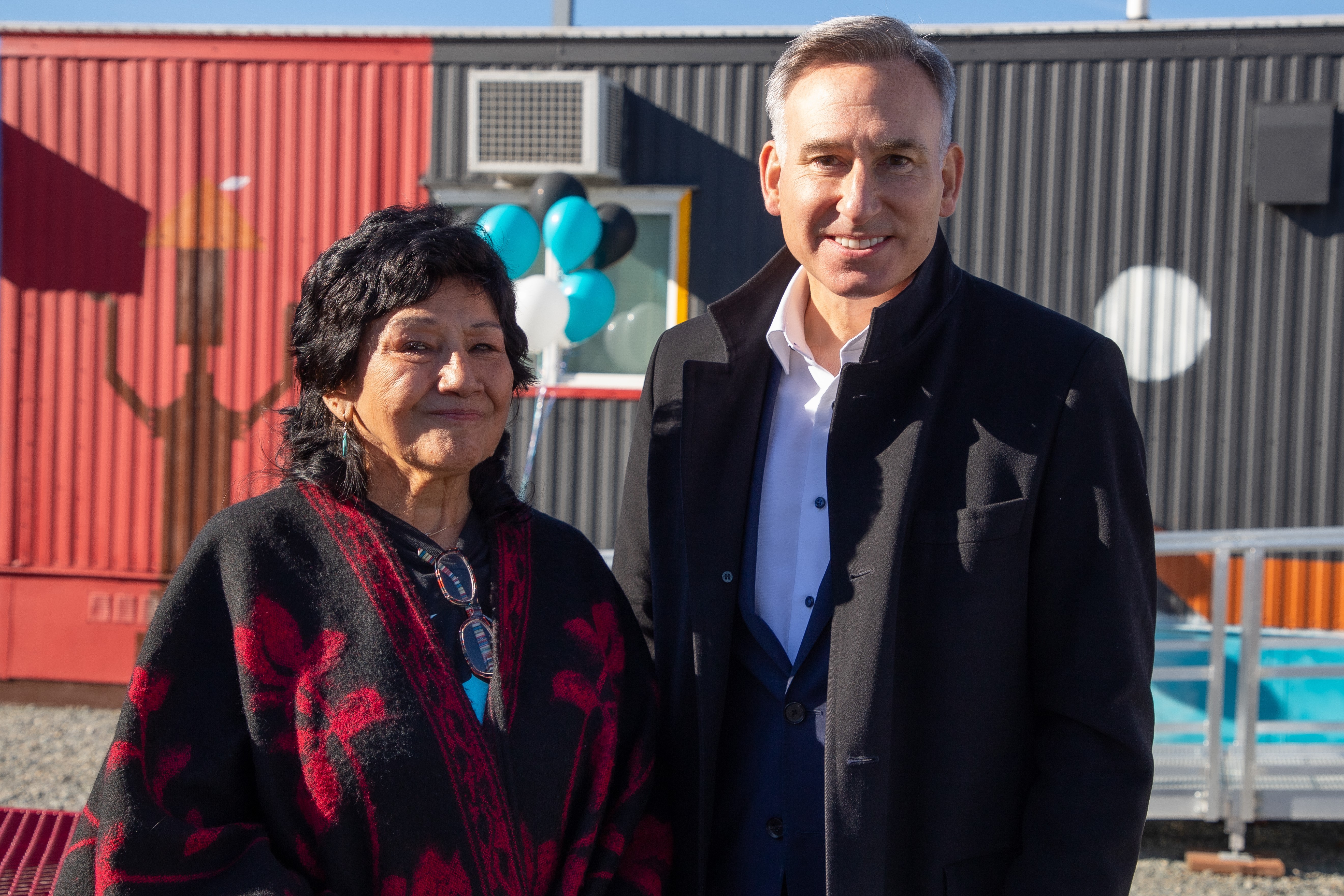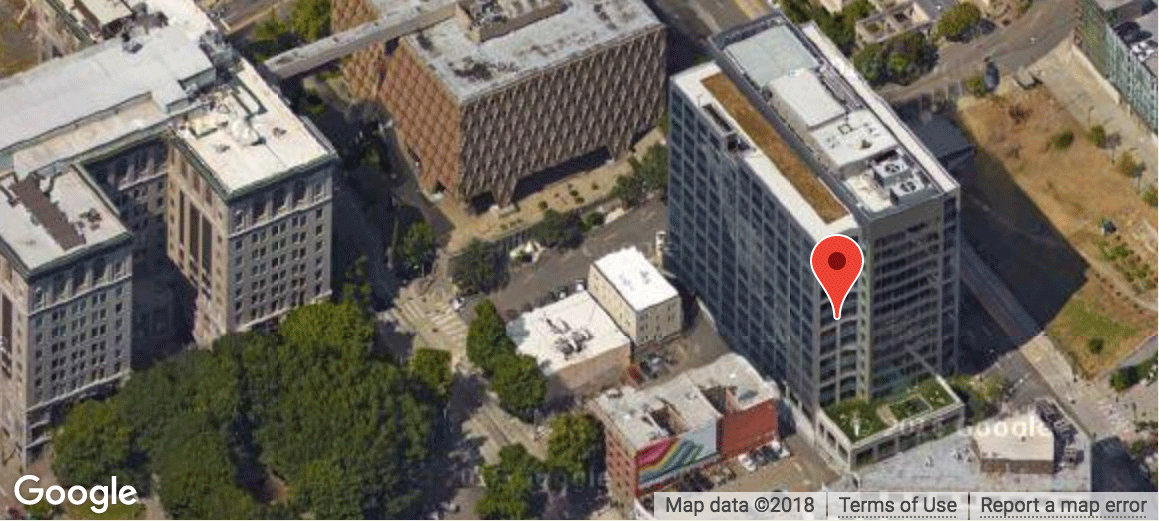2020 State of the County
Text of State of the County speech:
Hello, I’m King County Executive Dow Constantine.
Welcome to summer. To the mid-point of 2020. And to one of the most troubling, tragic and... hopeful moments in memory.
It is in the context of historic challenges and historic change that I am to deliver to the Metropolitan King County Council what the Charter calls “an annual statement of the financial and governmental affairs of the county."
So, to Chair Claudia Balducci, Councilmembers, and to elected leaders throughout this jurisdiction, our valued employees, and the 2.3 million people who call this place home - this is my report on The State of the County for 2020 - already a year like no other... with plenty more, including a presidential election, still to come.
I speak to you today at a time of great challenge and anxiety.
A global pandemic unprecedented in more than a century; and an economic collapse on a scale not seen in nearly as long.
This confluence of crises will test our mettle like nothing we have seen since the Second World War. But, as has often been observed, crisis can present opportunity. And the opportunity of this moment?
The prospect of genuine progress for a weary nation.
There is an awakening taking place in America. An awakening of the national conscience to the brutal reality of racism and bias throughout our society - an awakening which we can hope, in time, to have the most lasting impact of these historic upheavals.
After nearly five months of the world being turned upside down, there’s an understandable longing to get back to normal. The old normal was good, and comfortable for a lot of people.
But it was a dead end for many:
- People on the losing end of staggering income inequality.
- People under the thumb of deep, ingrained racism.
- People without a home.
We should aspire to be better. A community where every person can thrive. A nation that lives up to its founding promise.
If that is what we want, if that is our commitment, then we can’t just... go back to normal. We have to seize the opportunity of this crisis to create real, lasting, positive change.
The coronavirus pandemic has been devastating - globally, nationally, and locally. In King County alone: More than - 12,000 confirmed cases. 1,700 people hospitalized with severe illness. 600 lives lost. Friends. Family. People I knew, people you knew, who died before their time from a threat that was virtually unknown as the year began.
It is estimated that without bold action the death toll would have been much worse. Perhaps 20 times as many would have died here. But this community did act – quickly, decisively - and more than 10,000 of our neighbors, our friends, our loved ones, are alive today because of it.
People were asked to stay home, and millions answered the call. Businesses that could allowed people to work remotely. Many people suffered loss of income, or lost their jobs entirely.
This profound disruption has caused the economy to stagger. Those lucky enough to still have a job are compelled to learn new ways to work. Decades-old businesses are struggling to make it through, or closing for good. Our beloved arts and cultural touchstones are more fragile by the day. Students - and parents like me - wait to see what school will look like in the fall.
I have submitted three emergency supplemental budgets since March that included rental assistance, eviction relief, food security, tenant legal aid, and community support and outreach through our Office of Equity and Social Justice. But people are struggling, and worried - worried about losing a job, or about whether their job will be there when this is over - and it seems far from over. They are worried about keeping a roof over their kids’ heads, and food on the table.
And then, in the midst of this public health and economic upheaval, the nation is jarred by a vicious, state-sponsored murder. It is only one in an uninterrupted, centuries-long series of thousands of unjust and unjustified public and private executions. But the killing of George Floyd - because of the moment, or just because of the unvarnished brutality of it - struck a nerve - caused the nation, or more specifically the white majority of the nation that has never had to directly confront the reality of racism, to fumble for a mirror, and stare straight into it.
And in this moment America may suddenly see its true self - genuine aspirations born of the enlightenment - of liberty and equality, but a history steeped in genocide, slavery and racism; a moment of reckoning... and, after all these generations, the prospect of redemption.
What should give us optimism is the simple fact that, in this time of conflict and tumult, people appear remarkably... united.
Most of us understand the threat of coronavirus and have been willing to make simple sacrifices to protect ourselves and others. Most of us understand that the extraordinary income inequality that has characterized our economy is unhealthy and unsustainable. Most of us know, or are now seeing, that racism is a phenomenon not limited to a relative handful of clownish, vocal white supremacists - but that it is embedded in the form of bias throughout every system in our society.
King County’s overarching commitment - our True North - is that we will make this a welcoming community where every person can thrive.
These difficult months have shown our region’s true strengths, thrown our deficits into sharp relief, and set the stage for what we can accomplish together.
Our County’s namesake, Dr. Martin Luther King, Jr., said: “Only when it is dark enough can you see the stars.”
As we find our way forward, beacons like opportunity, equity, and hope, will guide our path as a government, and as a region.
Without a doubt, this is a year we will remember for a good, long time.
On February 26, I met with King County Public Health Officer Dr. Jeff Duchin and my senior staff to discuss the potential impact of the novel coronavirus, and all that we were doing to prepare, in case the virus struck here.
Even though there was only one positive case in Washington at the time, we had already set up our Health and Medical Area Command in the County headquarters building, and our team was tracing every possible contact of that one case, while preparing across the government.
My Budget Director Dwight Dively asked whether our agencies should set aside other work to accelerate coronavirus readiness. Yes, I said. Better safe than sorry.
Just two days after that briefing, I was in Washington DC to present on our successful early childhood programs, when I received a call, a call from Deputy Executive Rachel Smith that our worst fears had been realized. I made my apologies to the event organizers and caught the first flight back to stand with Dr. Duchin as we announced that a Kirkland nursing home - that King County - had become the epicenter. It was the first known coronavirus outbreak in the nation.
While our federal government dithered, and denied, and ducked responsibility, King County moved quickly.
Led by Public Health Director Patty Hayes, Dr. Duchin, and their team of epidemiologists, we connected with nursing homes, and focused on other places where large groups live closely together. We sounded the alarm, provided assistance, and re-enforced best health practices.
We worked with state officials to ramp up the nationally scarce testing, and took unprecedented actions to inhibit the spread of infection.
We tested residents and staff in all 52 skilled nursing facilities in King County, dispatched 115 clinical strike teams to homeless programs across the region, and responded to more than 1,400 media inquiries.
I want to thank every member of the public health and human services teams for their service to the community, and for the hard work that is still ahead.
Knowing that we needed to protect our hospital capacity for those most acutely ill, we moved quickly to create isolation, quarantine and recovery spaces for those who didn’t need hospitalization but could not safely stay at home.
We also worked to de-intensify larger homeless shelters, where we were concerned the virus might rapidly spread.
We leased vacant hotels in Issaquah, Bellevue, Renton, Sea-Tac and Seattle, and we purchased a Kent motel.
We put up large tents on a Shoreline soccer field and on vacant county property in Eastgate, converted a SoDo warehouse, and set up modular shelters in Interbay and North Seattle.
All told, we gave almost 1,400 people and families a private, quiet, and secure place to stay and recover - and we saved lives.
We were especially concerned about the virus spreading in congregate housing, like homeless shelters. So, for example, we moved residents from group shelter at the Morrison Hotel on Third Avenue, to individual rooms in a hotel on Grady Way.
Once they got a place of their own, this is what we found: shelter residents who for years had struggled with the most basic needs began to stabilize. They were able to secure their belongings, get a full night’s sleep, take a hot shower in the morning, do their laundry. A few clients landed jobs. Several began fitness regimens. Behavioral health emergencies declined precipitously.
And, in contrast to the grave danger of infection in a congregate setting, there have been more that 300 COVID tests at the Renton hotel - and not a single infection. None.
In short, the stability and security of a private space, and the ability to manage one’s own schedule, immediately improved lives, and prevented the spread of COVID.
Our Department of Community and Human Services, led by Leo Flor, made this happen.
The regional coordinator of the federal Interagency Council on Homelessness said: “King County was instrumental in leading the nation on a COVID-19 response. Being about three weeks ahead of the rest of the country, we were able to disseminate all of the King County learnings quickly. I cannot think of a state that did not reach out to us to learn from King County.”
The unity that characterized our community as this pandemic struck, that spirit of caring – that dedication to overcome any and all obstacles to get big things done – will be needed in the months and years ahead.
We now set before us the task of ensuring that every person should have the dignity of a place to call home; that wherever possible we will not return people to stay for the long term in crowded, congregate spaces; that we will seek space to make permanent the amazing transformation that has taken place for those who once stayed at the Morrison and other shelters.
And there's more:
─ We converted an unused wing of the downtown jail to help and house people facing the most difficult challenges, including chronic, long-term homelessness;
─ We transformed the Harborview Hall shelter from just overnight to 24-hours a day, and with on-site services;
─ We created a day shelter at Fourth and Jefferson to provide more than 100 people a place off the streets, with hot showers, and a cup of coffee; and...
─ We purchased mobile housing units formerly used for oil-workers in Texas, and we transported them to Metro property in SoDo, and, along with the Chief Seattle Club, opened Eagle Village, the first housing tailored specifically to the needs of Native Americans and Alaskan Natives, who are tragically over-represented in the homeless population.
One resident, Matthew Upham, is Nez Perce, Lummi, Oglala and Filipino. He said he spent much of his life struggling with addiction and homelessness.
He came to Eagle Village, and with the stability he found there he was able to stay in recovery, to work at a carwash, and to study real estate courses. He recently passed his tests, and he is now preparing to work at a mortgage company, a new life ready to begin.
Matthew credits the staff at Eagle Village for connecting him back to his people and their traditions, and he is grateful for Chief Seattle Club director Colleen Echohawk and all the other leaders who invested so much in helping him along his journey.
Just as we created alternatives to shelters, we also sought to limit coronavirus transmission in detention facilities.
And here, too, our emergency actions during the pandemic create the possibility of genuine, long-term transformation.
Working with our courts, and with our Public Defense Director Anitha Khandelwal, Prosecuting Attorney Dan Satterberg, and others, we safely reduced the adult inmate population from nearly 1,900 on March 13, to fewer than 1,300 today.
As we confronted the pandemic, we understood that we needed to quickly reduce the number of people in custody, and make special arrangements to protect the most medically vulnerable.
We did that, and now we are determined to make permanent this reduction in the jail population, and to create alternatives to incarceration that are less traumatic and more restorative, and a better use of public money.
You see, three out of every four dollars in the county General Fund is spent on crime, and courts and corrections.
People are talking a lot about defunding the police right now, but we are paying into an entire criminal legal system money that could be better spent to promote opportunity and human potential – the kinds of work King County does best with its human services and public health programs.
Completed in 1986, the King County Correctional Center is decrepit and expensive to operate, and its physical layout does not lend itself to behavioral health and other care.
In fact, it was one of the last jails built on this model, and every day we pay the price for its outdated design.
We must reimagine King County’s downtown Seattle campus in light of the realities of today. And the old jail must at some point come down. As we prepare the budget later this year, I intend to propose a phased closing of the King County Correctional Center after the pandemic.
Until then, we should seek to change detention, and the criminal legal system - to emphasize prevention, diversion, rehabilitation, and harm reduction.
In mid-March there were 43 youth in juvenile detention. We have managed to reduce that number to just 21 today.
In fact, when I was first elected King County Executive, the average number of youth in detention on a daily basis was 84. But we made Zero Youth Detention our mission, and we determinedly, relentlessly worked to drive down the number of youth in custody.
The old 212 bed youth detention building is no more. Bulldozed. Nothing but a gravel lot. The new Judge Patricia H. Clark Children and Family Justice Center, with far more room for services and far less for detention, opened on February 15.
It will take hard work and determination to keep the youth detention numbers at these historic lows. But, with the confidence that we can, I will propose capital funding to further reduce the space available for detention and convert it to therapeutic and community use.
And, I will propose additional investments to help create safe, community-based solutions for the increasingly difficult youth cases that remain, and seek to fully convert the remaining youth detention capacity to other uses as quickly as possible, and no later than 2025.
The path to Zero Youth Detention gets steeper and steeper from here, and only an all-out, concerted effort from government and community partners will get us to that summit.
To be sure, there are those who will find many reasons why we shouldn’t pursue these goals, and bureaucratic inertia has a strong pull.
But I am intent on shifting public dollars away from systems that can't deliver what we need - that leave us far short of our goals. We need to instead fund community supports that keep the public safe, and put people on a path to success.
We have to seize the opportunity to advance that vision and make it real.
Like education and health, mobility is essential to expanding opportunity, and ensuring that prosperity is accessible to all.
For close to a half-million riders every day, reliable and fast transit was, and will again be, essential to their quality of life.
Even during this crisis, for the sake those commuters, our environment and our economy, King County Metro Transit is forging ahead.
Last Fall we began delivering more Eastside service, with increased evening and weekend options, and better connections to Link light rail and RapidRide.
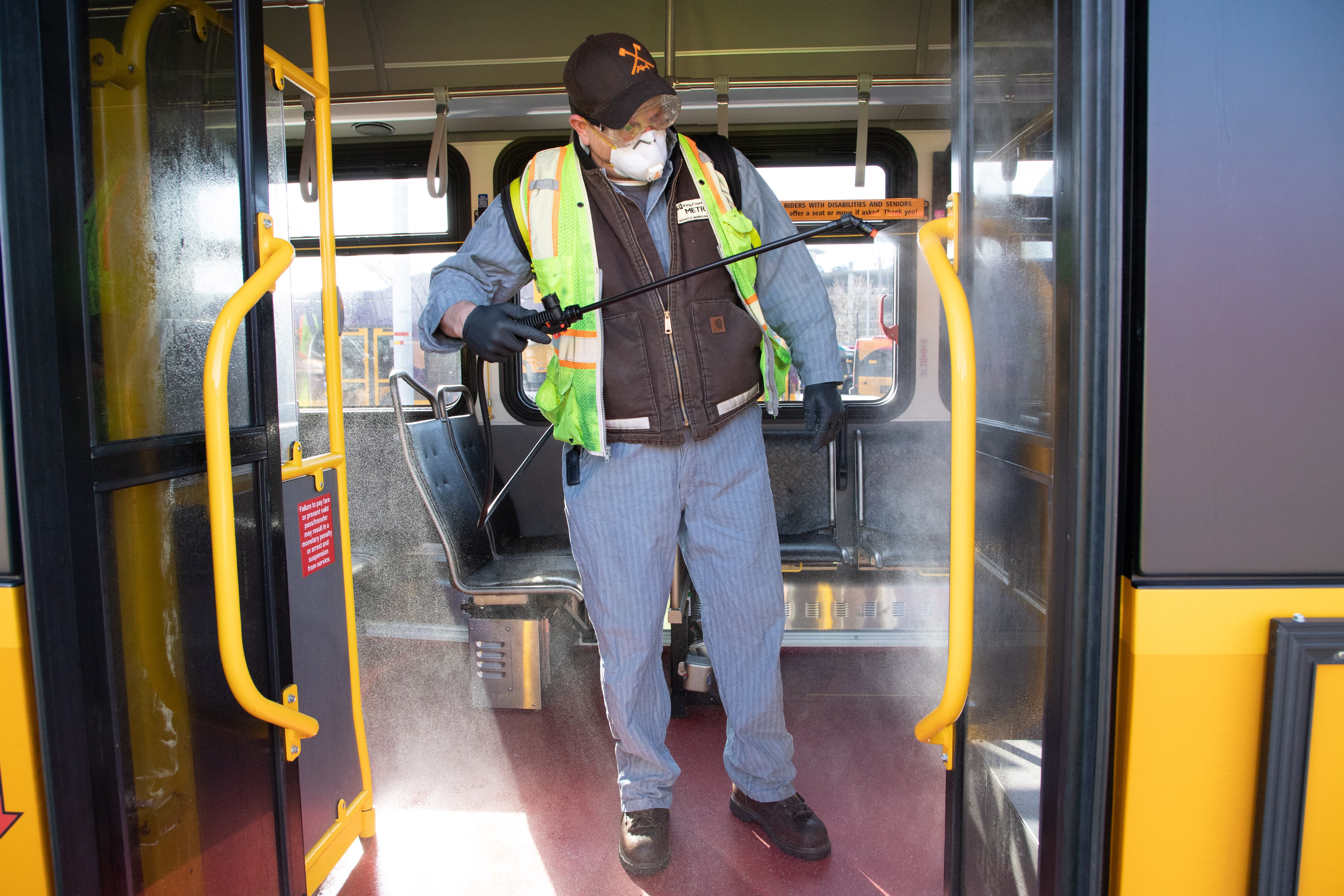
We’re creating a single frequent service route between Renton, Kent and Auburn that will ultimately become the new RapidRide I line.
All these improvements, and more, take place against the backdrop of significant financial challenges for Metro.
Because of the coronavirus and the economic downturn, Metro projects an unprecedented loss in sales tax revenue and farebox collections totaling almost $300 million this year, and more than $600 million for the next biennium.
This will have impacts on service, on operators and other employees, and on capital investments, but we are committed to fighting through these difficult issues to maintain mobility across our region.
In an editorial in The Seattle Times a few months ago, I announced my Clean Water, Healthy Habitat initiative to accelerate restoration of Puget Sound.
Here is the idea:
Over the next decade, King County is on track to invest over $9 billion in water-quality improvements — including nearly $7 billion for upgrading pumps, backup generators and electrical equipment at five sewage treatment plants and 47 pump stations.
Driven by federal and state regulations, the remaining $2 1/2 billion will be used to treat stormwater that enters our system - but not much more stormwater than we currently handle.
I tasked our King County water scientists with exploring whether we could get a much larger environmental benefit by first taking on the much greater volume of stormwater that never gets into the system - the contaminated rainwater that flows directly into the Green River, Lake Washington, Puget Sound and other waterways — slowly poisoning them.
If we do nothing about this uncontrolled runoff, regardless of our other investments, the orcas and salmon will go extinct before our eyes.
I can’t accept that, and I look forward to equipping decision-makers with the latest science to help make the best investments.
More than anything else, I got into politics to preserve and protect the seas and rivers, forests and farmlands, of this place I have always called home.
It began with a little ravine in West Seattle where we used to play as kids, and where this past sunny summer week I got to watch my own little daughter run and play. The neighborhood united to save it 30 years ago, and today you can walk there, under a canopy of trees, on a trail through the woods made all the more precious by the development all around.
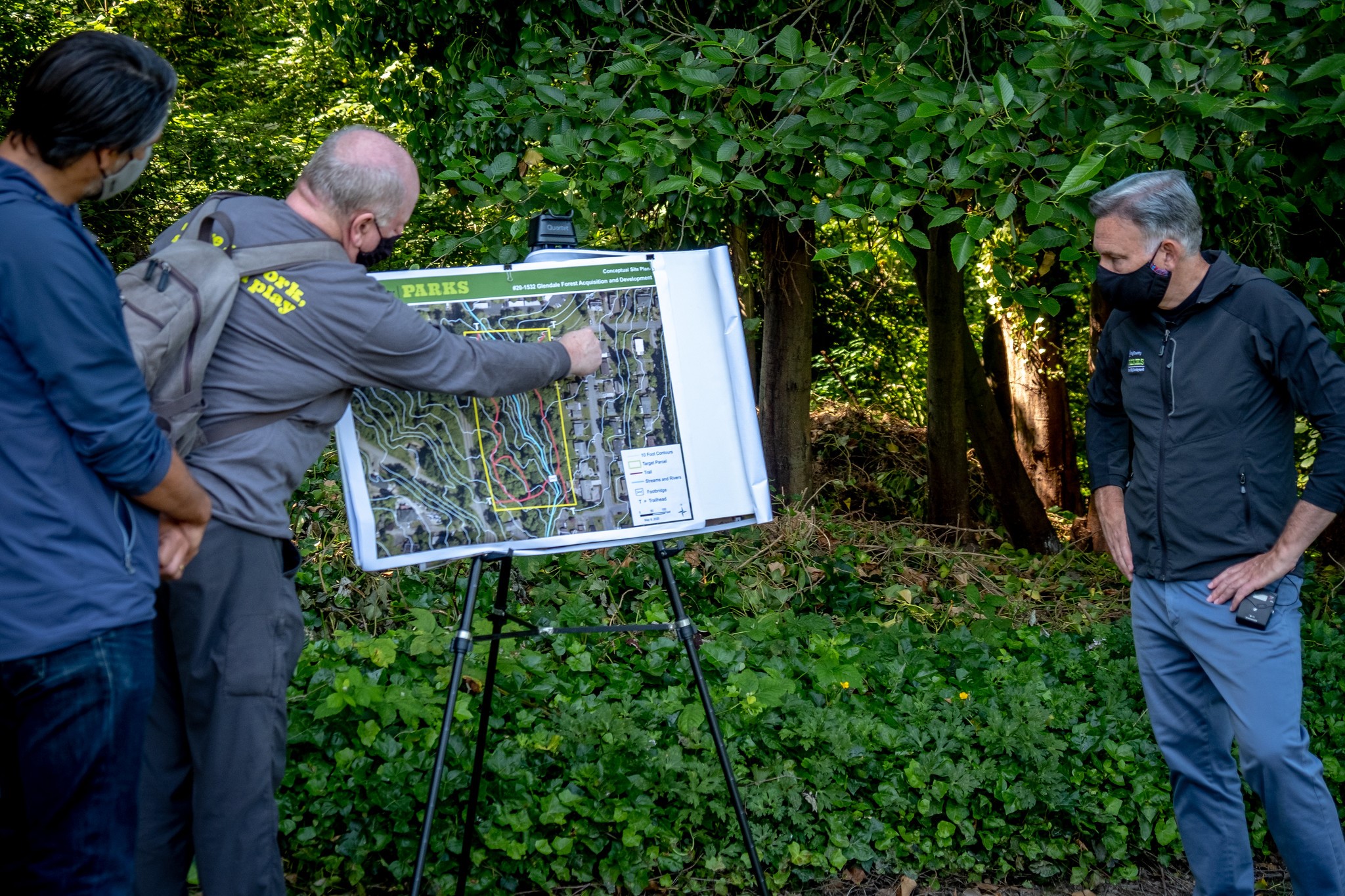
Just as important, the Land Conservation Initiative is about eliminating disparities in public open spaces in communities with the greatest and most acute needs.
Using accelerated Conservation Futures funding approved last year and Parks Levy grants, we anticipate awarding up to $44 million for land preservation projects this year alone, more than double the historical pace.
In fact, recently I was able to visit our newly acquired 5-acre urban forest in North Highline. With hiking trails and a creek, this new park will offer a place for families in historically underserved communities to get close to nature.
In our Strategic Climate Action Plan, we set for ourselves the ambitious goal of planting one million trees in two years, and we accomplished that.
Now, as part of the 2020 Climate Action Plan update, we are tripling that commitment, planting, protecting and preserving three million trees along with new countywide energy programs, strategies to achieve zero waste, and expanded protection of forests and farms.
In this moment, I challenging us all to innovate like never before, and Christie True Director of the Department of Natural Resources and Parks, had an idea that was fairly radical.
Christie’s staff is headquartered in the King Street Center office building in Pioneer Square. As soon as we learned about the coronavirus outbreak, we directed these and other King County employees to work remotely.
Christie now wants to convert the 800-strong King Street workforce to working from home, or from any of our hundreds of natural resources facilities across the county, on an ongoing basis.
Doing so would further shrink the department’s carbon footprint by taking cars off the road, and reducing building energy use. Just as important, supervisors say productivity has increased with people working remotely.
We can pilot remote work for this one department, and determine whether and how to expand across the County… to clean the air, ease gridlock, get more work done, lead by example.
This crisis opens the door to innovation. To continuous improvement. To becoming better at everything we do.
Creating equity and expanding opportunity are infused in everything we do as a government, every day that we are given the chance to serve the community.
Executive Ron Sims introduced the tenets of Equity and Social Justice, or ESJ, into the county’s work in 2008. In my first year in office I made ESJ a central pillar of our countywide Strategic Plan, then created our Office of Equity and Social Justice; and then we completed the ESJ Strategic Plan and committed to leading with racial justice. I’m pleased to let you know that we have welcomed veteran King County HR and equity leader Anita Whitfield as our new Chief Equity and Inclusion Officer, to lead the office and all the county’s work to create a more just workplace and community.
In this moment, people of good will are gripped with the fierce urgency of now - the urgency to do more. To uproot racism. To create a society in which every person is safe, valued, and has the opportunity to thrive.
The death of George Floyd was so vicious and cruel and at odds with America’s vision of what it is supposed to be – and yet consistent with so many people’s experience – that every institution, every past practice must be held to account.
Racism is a public health crisis. As such, we must seek to understand how different systems relate to one another - understand root causes - solve problems at their source, so that people can live their lives unencumbered by fear, hate and injustice.
One of the commitments we’ve made in King County has been to overcome inequities that encumber a newborn child. That is the premise of our groundbreaking effort, Best Starts for Kids.
Since the inception of the Best Starts for Kids levy four years ago, we have partnered with more than 280 community organizations and invested in more than 480 programs, reaching nearly a quarter million children, youth and families.
As part of this work:
−Families received more than three million basic necessities like diapers, clothes, baby formula, car seats, and fresh fruits and vegetables…
−More than 7,000 young people have engaged in programming ranging from leadership development to learning how to build and sustain healthy relationships…
−Our “Youth and Family Homelessness Prevention” investments helped nearly 10,000 people stay in their homes by providing housing assistance and resolving conflicts with landlords, along with connections to good jobs...
Next year I will ask voters to renew Best Starts for Kids, and we should build on our successful work helping young people with childcare, staying in school, and navigating the difficult transition to young adulthood.
We make these and other investments because they reflect our priorities and our values.
Our goal is a King County that works not just for those who are born to money, or born white, or born here, but one where all are welcome and, through hard work and determination, can thrive.
The day before he was killed, Dr. King said: “Trouble is in the land; confusion all around. But I know, somehow, that only when it is dark enough can you see the stars.”
A half-century later the night is darker still. Viral pandemic. Extreme income inequality. Persistent racism. Global environmental collapse.
Those stars that Dr. King referenced - they guide us in this moment, and illuminate how far on our journey we have left to go.
This is a crisis; there is no business as usual. That presents opportunities for fundamental change across everything we do.
While this pandemic will one day recede, it is the task of all those who work for a better nation to maintain our momentum and focus to achieve great things. House the homeless. Heal the sick. Restore the planet. Provide opportunity for all those who seek to create for themselves a better life.
Returning to the status quo only revisits the failures of the past.
There are moments when we are bound to be overwhelmed, when we doubt our own capacity to get through to the other side.
But, together, we will battle through this time of crisis. And not only that, we will use this moment, this unprecedented moment, as the catalyst for real change, to create the community, nation, and world we need.
Thank you
| King County Executive Dow Constantine |
 |
|
Read the Executive's biography |
|

 Translate
Translate
